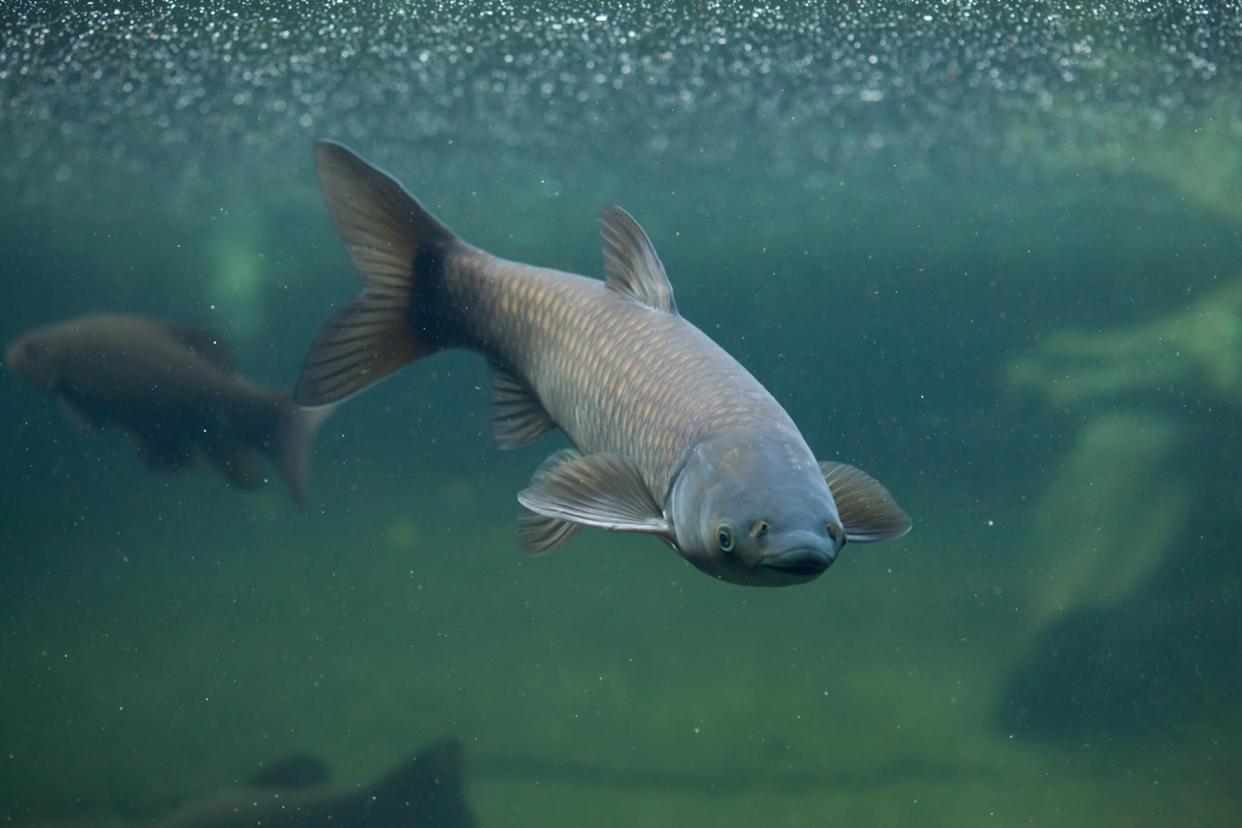Scientist urges public to eat ‘environmental time bomb’ wreaking havoc in US waterways: ‘Our focus should be on reduction’

A scientist is encouraging the public to help control an invasive fish population by eating it.
Mark Morgan, an associate professor at the University of Missouri-Columbia, has spent more than a decade researching the Asian carp, an invasive species to the United States, Modern Conservationist reported. Also known as the silver carp, the fish was introduced to the U.S. in the 1970s to assist with water purification in catfish ponds.
Over time, the carp population grew exponentially and became an environmental burden in Midwestern waters. As the number of carp increased, fish species native to Midwest waterways struggled to compete for food.
“The river that’s most affected is the Illinois River, which runs from Chicago to St. Louis. That waterway has the most Asian carp of any place on the planet, including China — and that is where the fish came from,” Morgan told Modern Conservationist.
The rapid growth of the carp population can be attributed to the fish’s reproduction rate. According to the U.S. Fish and Wildlife Service, female carp can lay anywhere from 145,000 to 5.4 million eggs.
“It’s an environmental time bomb,” Morgan said.
The presence of the invasive carp also poses a physical threat to humans. The species engages in acrobatic behaviors, with a tendency to jump out of the water in groups. Considering that the average carp grows up to 3 feet long and can weigh between 20 and 80 pounds, a carp attack can severely injure boaters, as the EPA has noted.
In 2015, Morgan began the Eat MO Carp initiative to raise awareness about the need to control the disproportionate carp population through consumption. In its native countries, the Asian carp is considered a delicious delicacy that is low in metal content and a rich source of nutrients.
Morgan also leverages the Eat MO Carp project to feed those in need. Modern Conservationist reported that, in 2018, Morgan provided processed carp for consumption to underserved communities in Haiti, a nation with widespread child malnutrition and where about half of adult women suffer from anemia, according to the Pan American Health Organization. To expand the global reach of Eat MO Carp’s food security initiatives, Morgan partnered with Sorce Freshwater to create a powdered carp product.
While Eat MO Carp is still in its early stages, it has earned various grants and over $2,700 in crowdfunding donations to support its mission. More restaurants are serving carp, and efforts to rebrand the fish as “copi” on menus are also in progress.
However, the need to reduce the presence of carp in U.S. waters remains urgent. The carp population in the Mississippi River is close to reaching the Great Lakes, which poses great risks to its native ecosystem and local fishing industries, the Great Lakes Fishery Commission reported.
“Carp have been prevented from entering Lake Michigan because of electrification, but the army is amassing the troops,” Morgan said to Modern Conservationist. “Now our focus should be on reduction, not simply prevention.”
Join our free newsletter for cool news and cool tips that make it easy to help yourself while helping the planet.
